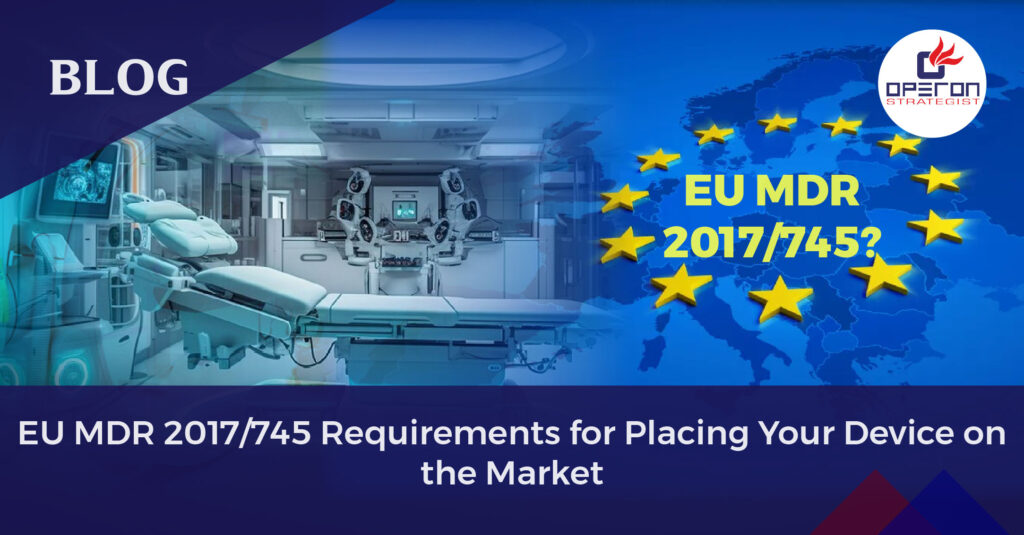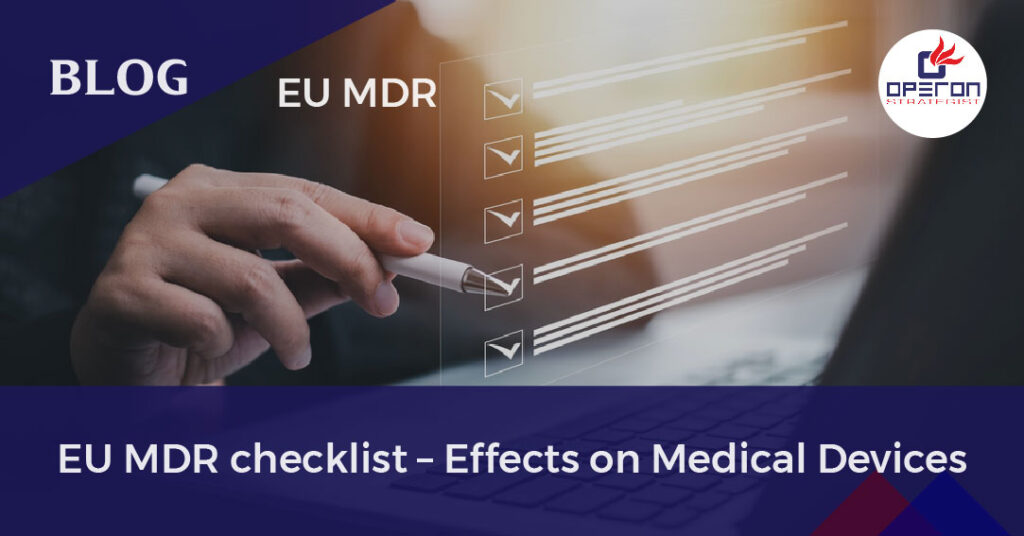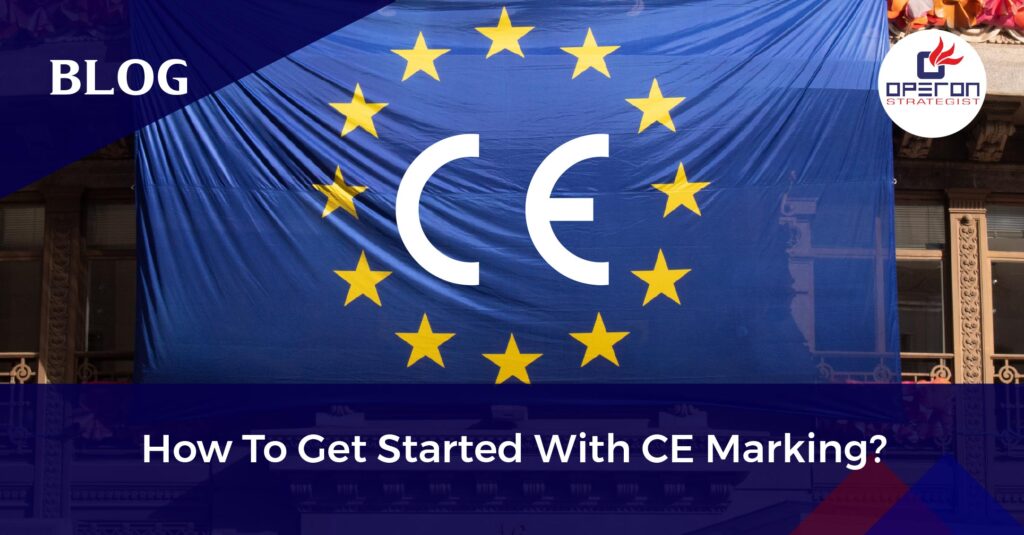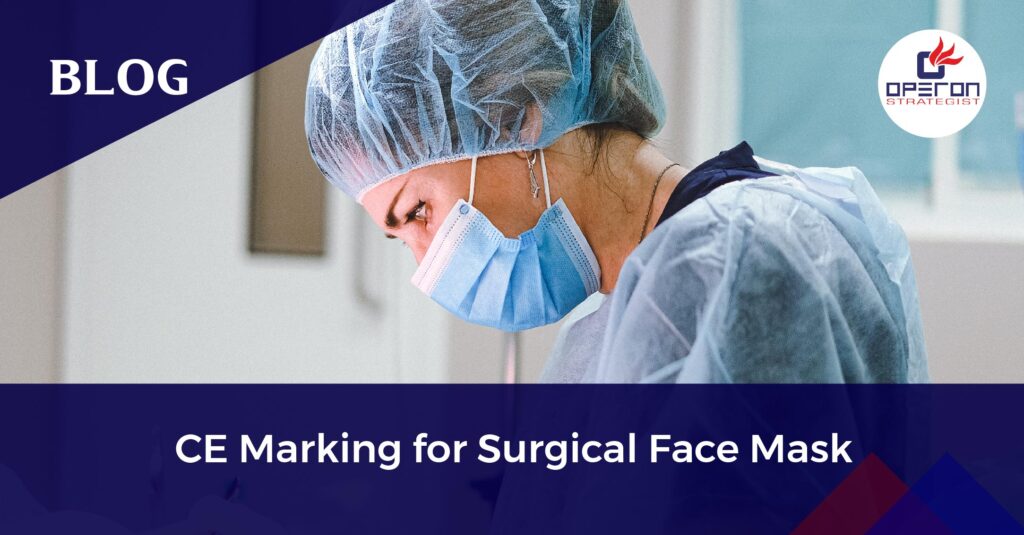An Overview:
In this blog, we will delve into the crucial requirements manufacturers must fulfill before placing their medical devices on the European market in accordance with the EU MDR 2017/745. Adhering to these regulations is not only essential for gaining market access but also for upholding the highest standards of safety and performance. We will explore each requirement in detail, from determining device classification to ensuring compliance with General Safety and Performance Requirements (GSPR), managing risks, conducting clinical evaluations, and preparing the necessary technical documentation. Understanding and meeting these requirements is vital for successful market entry and maintaining the integrity of medical devices within the European market. Let’s break down these key aspects to help you navigate the regulatory landscape effectively.
Looking For a Medical Device Regulatory Consultant?
Let’s have a word about your next project
How Do You Determine the Status and Classification of Your Device?
The first step under the EU MDR 2017/745 is to determine whether your product qualifies as a medical device. Once confirmed, you need to classify the device into one of four classes (I, IIa, IIb, III) based on its risk, intended use, and duration of contact with the body. This classification dictates the conformity assessment route and the level of scrutiny by notified bodies.
What Are the General Safety and Performance Requirements (GSPR)?
Manufacturers must ensure their devices comply with the General Safety and Performance Requirements (GSPR) outlined in Annex I of the EU Medical Device Regulation. This involves adhering to specific standards and demonstrating conformity through rigorous testing and validation processes. Utilizing harmonized standards can simplify meeting these requirements.
How to Implement a Risk Management Process?
A comprehensive risk management process is vital under the MDR regulation. Manufacturers must identify, evaluate, and mitigate risks associated with their devices. Using structured methods and templates, like our risk management templates, can streamline this process and ensure all potential risks are effectively managed.
What Is Involved in the Clinical Evaluation Process?
The clinical evaluation process is essential for demonstrating the safety and performance of your medical device. This involves collecting and assessing clinical data through planned investigations and post-market clinical follow-up (PMCF). The findings are documented in a clinical evaluation report (CER), which is a critical component of compliance with the European medical device regulation.
What Information Must Be Supplied by the Manufacturer?
Clear and comprehensive information must accompany your medical device. This includes labeling, instructions for use, and promotional materials, all in compliance with the MDR. The information should be consistent, user-friendly, and accessible to the intended users, ensuring they understand how to use the device safely and effectively.
How to Compile Technical Documentation?
Technical documentation is crucial for demonstrating compliance with the MDR. This includes detailed design and manufacturing information, risk management files, and clinical evaluation reports. Our technical documentation template provides a structured format to help you compile all necessary documents systematically.
What Are the Conformity Assessment Procedures?
Conformity assessment procedures vary based on the classification of the device. Lower-risk devices may undergo self-assessment, while higher-risk devices require notified body involvement. These procedures ensure that your device meets all relevant GSPR and regulatory requirements, confirming its safety and performance.
How to Achieve CE Marking and EU Declaration of Conformity?
Once compliance with all requirements is demonstrated, you can affix the CE marking to your device, signifying it meets the EU MDR 2017/745 standards. Additionally, you must draft an EU Declaration of Conformity, declaring that the device complies with the MDR and other applicable legislation.
How to Register on EUDAMED?
EUDAMED, the European Database on Medical Devices, plays a crucial role in the MDR framework. Manufacturers must register their devices and themselves on EUDAMED, providing essential information about the device, conformity assessment, and post-market surveillance. This enhances transparency and traceability within the EU market.
Conclusion
Meeting the requirements of the EU Medical Device Regulation is essential for manufacturers aiming to place their devices on the European market. By understanding and addressing these key aspects—from classification and risk management to clinical evaluation and EUDAMED registration—manufacturers can ensure compliance and contribute to the safety and efficacy of medical devices in Europe.
Ensure EU MDR 2017/745 Compliance and Smooth Market Entry
Ensure Compliance with Operon Strategist
Navigating the complex landscape of the EU Medical Device Regulation (MDR) 2017/745 can be challenging, but you don’t have to do it alone. Partner with Operon Strategist for expert guidance and tailored solutions that ensure your medical device meets all regulatory requirements efficiently and effectively. Our comprehensive consulting services cover everything from device classification and risk management to clinical evaluation, technical documentation, and EUDAMED registration. Benefit from our deep regulatory expertise, structured templates, and end-to-end support to achieve seamless market entry and compliance. Contact Operon Strategist today to schedule a consultation and embark on a smooth journey to regulatory compliance under the EU MDR 2017/745.
- adminhttps://operonstrategist.com/author/admin-2/
- adminhttps://operonstrategist.com/author/admin-2/
- adminhttps://operonstrategist.com/author/admin-2/
- adminhttps://operonstrategist.com/author/admin-2/




